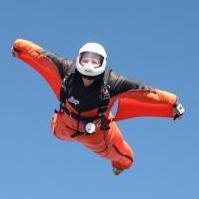Recommended Posts
How about the day’s when the wind at altitude is 90 to 180 off of what it is on the ground. Some will want to run jump run relative to the ground winds, others will want to run jump run into the wind, then move the jump run to the up wind side with 90 degrees off the wind line, or if 180 off top to bottom into the wind, and start exit before you get to the DZ. Last weekend we had the 180 degree thing going on, and on a tandem were still in the “uppers”, we tried to open about straight up, run East to be up wind, then West back to the DZ. Now take into account that the Winds Aloft Forecast is about as accurate as a 3 day WX forecast. In a 182, you can work with the pilot on the climb and work out the wind direction and speed as you climb, more accurate by far, but takes some skill.
Along the same lines, I find it pitiful how poorly people can spot. I jump a 182, and am familiar with the area surrounding my DZ. I can spot form the back of the airplane while hooked up with a tandem, just by watching the roads, and landmarks as we pass over them. Nothing worse than someone who just has to open that door 3 miles out, when it’s blowing 40 knots at altitude, and 10 to 20 degrees!
Then theirs the “Harry Barr Skyvan”, people laying down looking under the airplane and spotting from way out, giving corrections like “fly this way another 5 miles, then have him do a 180 left, and I’ll go from there, relayed back up the airplane through the skydivers. Crazy, but if you’ve jumped that airplane with Harry at the yoke, you know I’m not exaggerating at all (well maybe just a little).
Martin
Along the same lines, I find it pitiful how poorly people can spot. I jump a 182, and am familiar with the area surrounding my DZ. I can spot form the back of the airplane while hooked up with a tandem, just by watching the roads, and landmarks as we pass over them. Nothing worse than someone who just has to open that door 3 miles out, when it’s blowing 40 knots at altitude, and 10 to 20 degrees!
Then theirs the “Harry Barr Skyvan”, people laying down looking under the airplane and spotting from way out, giving corrections like “fly this way another 5 miles, then have him do a 180 left, and I’ll go from there, relayed back up the airplane through the skydivers. Crazy, but if you’ve jumped that airplane with Harry at the yoke, you know I’m not exaggerating at all (well maybe just a little).
Martin
Experience is what you get when you thought you were going to get something else.
AC DZ
AC DZ
skr 1
> I've had a heck of a time understanding how to simplify spotting.
Do you mean to get the main ideas yourself,
or to explain it to a student, or ... ?
Spotting has a *lot* of factors. It's complicated
and takes most people hundreds of jumps to learn.
Even in the mythical old days when theoretically
people knew how to spot it wasn't so. Everybody
knew who could spot and who couldn't :-) :-)
Skr
Do you mean to get the main ideas yourself,
or to explain it to a student, or ... ?
Spotting has a *lot* of factors. It's complicated
and takes most people hundreds of jumps to learn.
Even in the mythical old days when theoretically
people knew how to spot it wasn't so. Everybody
knew who could spot and who couldn't :-) :-)
Skr
mid-70s...Z-hills...most would get the LZ spot...occasionally the asshat would be set up for the shit ponds.

My reality and yours are quite different.
I think we're all Bozos on this bus.
Falcon5232, SCS8170, SCSA353, POPS9398, DS239
I think we're all Bozos on this bus.
Falcon5232, SCS8170, SCSA353, POPS9398, DS239
JohnMitchell 16
People make it more complicated than it is. Get out upwind of the target. On windy days, get out more upwind. Most spots get blown because people don't know how to look straight down accurately and aim the plane, not because they don't know where to get out. Kind of like the gun range. Everyone knows what the bullseye is, they just can't seem to hit it.
Ask the pilot where the spot is when you get on the plane, then guide the plane to it using course corrections.
Ask the pilot where the spot is when you get on the plane, then guide the plane to it using course corrections.






Example:
12K; 40mph @270
9k: 30mph @300
6k: 30mph @ 270
3k: 20mph @ 240
That averages out to 30mph @ 270 - so you know that from your planned opening point, you need to be 1/2 mile out @270.
I love you, Shannon and Jim.
POPS 9708 , SCR 14706
Share this post
Link to post
Share on other sites